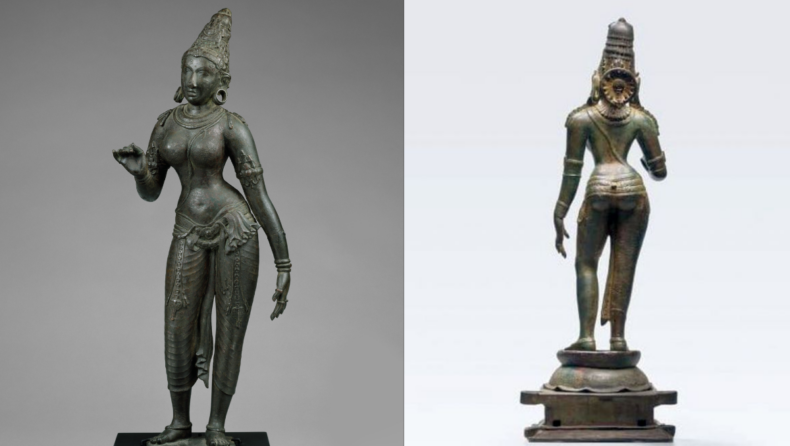Goddess Parvati Idol of the Chola-era stolen from the Tamil Nadu temple traced down by the police after 50 years. Found in the US Bonhams Auction House.
The Goddess Parvati idol which was stolen back in the 1970s has now been recovered by the police.
According to police, the idol was found in New York. It has been now 50 years since the idol was stolen. It is said that the idol went missing from Nadanapureshwarar Sivan Temple at Thandanthottam in Kumbakonam, Tamil Nadu.
Furthermore, the idol was traced at the Bonhams Auction House in New York, US. The idol is believed to be from the era of Chola, making it even more precious. It must also be observed that the first complaint lodged was with the local police in 1971.
In response to a complaint from a man by the name of K Vasu, the idol wing filed a case in 2019.
A recent probe into the matter was launched by an inspector from the wing, who started hunting for Chola-era Parvati idols in international museums and auction shops.
Idol Wing Inspector M Chitra investigated the case. After a thorough investigation, M Chitra and Jayanth Murali, Director General of Police, Idol Wing CID, completed the search and finally found it. Their team is all set to bring back the stolen idol for which the documents are also all prepped.
About the stolen idol of Goddess Parvati
The goddess Parvati, or Uma as she is most generally known in South India, is shown standing. The Parvati idol is made of copper alloy and dates to the Chola era in the 12th century. The idol is 52 cm tall and is worth US$ 212,575 in total (about Rs 1.68 crore).
Moreover, she is depicted with a crown made of stacked rings that get smaller and eventually end in a lotus bloom, known as a Karanda mukuta.

According to the sources, the necklaces, armbands, girdles, and clothing carry over the patterns from the crown, enhancing the bronze texture. The sculpture, which embodies the self-assured and time-honored aesthetic canon of the Chola empire, is a monument to the technical talent of the artist.
The figure represents the mature Chola style of the 12th century, according to Sivaramamurti’s stylistic chronology.













